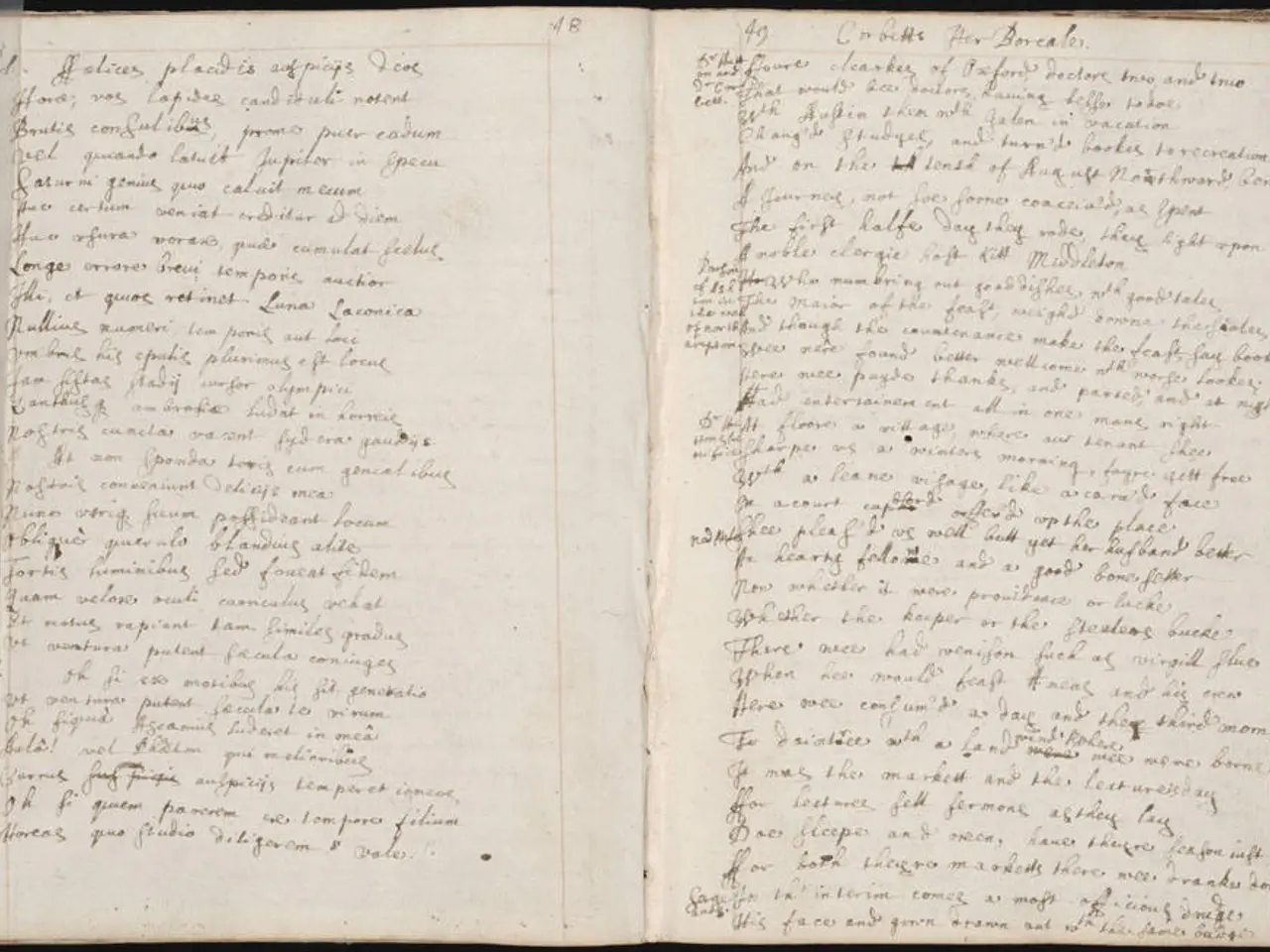Unveiling Cuneiform: Fascinating Facts about the Ancient World's First Recognized Writing System
The British Museum, home to the world's largest collection of cuneiform tablets, houses a treasure trove of historical knowledge that dates back nearly 5,000 years. Cuneiform, a writing system that originated in Mesopotamia around 3200 BCE, is not a language or an alphabet but uses between 600 and 1000 characters to write words or parts of them, or syllables or parts of them.
The intricate wedge-shaped characters, reminiscent of a 'cuneus' or a wedge, were carved onto clay tablets using a reed stylus. This writing system, which continued to be used until the first century AD, offers a fascinating glimpse into the lives of the ancient civilizations that thrived in the region.
Cuneiform is believed to have predated Egyptian hieroglyphics, with both scripts evolving independently. While Egyptian hieroglyphic writing seemed to have been born fully-formed, cuneiform went through various stages of development, including the beginning of signs and numbers.
The British Museum's collection includes cuneiform tablets of various sizes, with many comparable to a modern mobile phone. Many of these tablets have survived by chance, providing a unique window into the past. Reading ancient letters, even those that are 4,000 years old, can be a captivating experience due to their elegant and delicate script.
Interestingly, children visiting the British Museum seem to naturally take to learning cuneiform, finding clay homework in wedge-shaped characters more exciting than traditional exercises. This suggests that the ancient writing system still holds a certain allure for the younger generation.
Cuneiform was used to record a wide range of information, from laws and literature to trade and administration. It offers insights into the voices of various people from ancient times, including children, bankers, merchants, priests, healers, and women, in addition to kings and their scribes.
The two main languages written in Cuneiform are Sumerian and Akkadian, but more than a dozen others are recorded, suggesting it could be used today to spell languages like Chinese, Hungarian, or English. The British Museum Press published a book on cuneiform called Cuneiform in March 2015, authored by Irving Finkel and Jonathan Taylor.
Today, cuneiform remains highly relevant due to its foundational role as one of the earliest systems of writing and its vast historical, linguistic, and cultural insights into ancient Mesopotamian civilization. The British Museum’s large collection of cuneiform tablets provides a unique resource for researchers using modern technologies like AI to translate and study these texts, thereby deepening understanding of ancient societies and their literacies.
The study of cuneiform reveals how ancient civilizations recorded laws, literature, trade, and administration. It sheds light on the scribal profession and education systems, showing ancient educational priorities and social stratification around literacy. Recent developments, such as AI-powered accurate transcription of cuneiform scripts, enable mass digitization and translation, democratizing access to these ancient texts and facilitating new scholarship and understanding of early human history.
The ERC-funded "Rewriting the End of Cuneiform Civilization" project exemplifies ongoing academic efforts to reinterpret the final centuries of cuneiform use, showing it is not a closed chapter but a subject of active research. Hosting the largest cuneiform collection, the British Museum is central to preservation, study, and public awareness of this ancient script, anchoring cuneiform’s relevance both academically and culturally.
In sum, while cuneiform is no longer used for communication, its study remains crucial for understanding early writing, ancient law, literature, education, and administration, supported heavily by collections like those in the British Museum and enabled by new technologies.
[References] 1. Finkel, I. (2015). Cuneiform: A Very Short Introduction. Oxford University Press. 2. Taylor, J., & Finkel, I. (2015). The Oxford History of the Classical World. Oxford University Press. 3. Potts, D. T. (2008). The Archaeology of Elam: Formation and Transformation of an Ancient Iranian State. Cambridge University Press. 4. Westenholz, A. (1997). The Proto-Elamite Problem. Brill Academic Publishers. 5. Robson, E., & Biggs, R. (2011). The Oxford Handbook of Cuneiform Culture. Oxford University Press.
The intriguing wedding of ancient education and modern technology can be witnessed in the home-and-garden of the British Museum, as children find learning cuneiform, the ancient writing system, more engaging than conventional exercises. This suggests that the allure of cuneiform still captivates the younger generation.
Cuneiform, once used to record a wide array of information such as laws, literature, and trade, continues to offer spiritual insights into the lifestyle of ancient civilizations today, thanks to research and technological advancements in its study.




